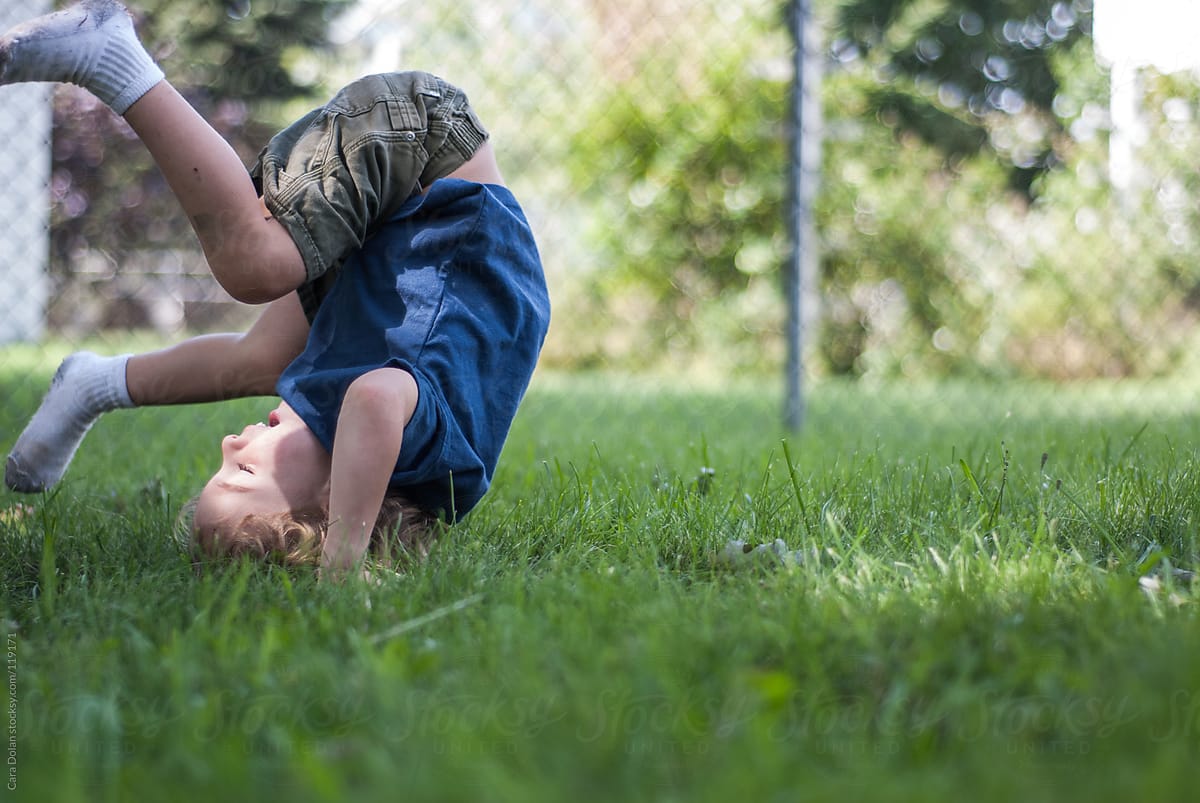I. Introduction

In today’s fitness landscape, incorporating acrobatic elements into training routines has gained significant popularity. The inclusion of acrobatics not only adds an exciting and dynamic element to workouts but also improves strength, flexibility, and overall body control. One such acrobatic move that brings an intense challenge and thrill is the somersault. In this blog post, we will explore the importance of incorporating acrobatic elements into fitness routines and delve into the exciting world of somersaults.
II. Understanding Somersaults: Techniques and Safety Precautions
A. Exploring the Basics
- Definition and Variations of Somersaults:
A somersault is a fundamental acrobatic move involving a complete rotation of the body in mid-air. There are various variations of somersaults, including the forward somersault, backward somersault, and even sideways somersaults. Each variation brings its own set of challenges and benefits. - Warm-Up Exercises for Flexibility and Mobility:
Before attempting somersaults, it is crucial to adequately warm up your body. Flexibility and mobility exercises specific to the areas involved in somersaults, such as the spine, hips, and shoulders, help prevent injuries and improve performance. - Key Safety Measures to Prevent Injuries during Training:
Safety should always be a top priority when incorporating acrobatic moves like somersaults into fitness routines. It is important to understand and implement safety measures such as proper mats, suitable training environments, and the use of spotters to mitigate any potential risks.
B. Progression and Skill Development

- Gradually Increasing Difficulty and Complexity:
Like any skill, somersaults require a progressive approach. Starting with basic progressions, such as practicing rolls, forward rolls, or handstand to rolls, allows your body to adapt gradually to the demands of somersaults. As you gain confidence and proficiency, you can progress to more advanced techniques. - Advanced Techniques for Experienced Fitness Enthusiasts:
For those with a solid foundation in acrobatics and fitness, there are more complex somersault variations to explore, such as the twisting somersaults, multiple somersaults in a row (called tumbles), or even combinations with other acrobatic moves like flips or twists. - Safety Considerations and Appropriate Progression for Children and Older Adults:
It is important to adjust the progression and intensity of somersault training to suit the age group and fitness level of individuals. Children and older adults should focus on building a strong foundation of body awareness, core strength, and flexibility before attempting more advanced somersault variations.
C. Landing Techniques and Safety Measures
- Importance of Proper Landing Techniques to Prevent Injuries:
Knowing how to land safely after performing a somersault is crucial for injury prevention. Proper landing techniques involve absorbing impact through controlled bending of the knees, rolling out of the somersault, and distributing forces evenly throughout the body. - Learning How to Tuck and Roll Safely:
One of the key skills in somersaults is the ability to tuck and roll effectively. Learning proper tucking techniques and practicing rolling drills help improve the fluidity and safety of the somersault motion. - Creating a Safe Training Environment:
When practicing somersaults, it is important to train in a safe environment with appropriate mats and flooring. Clearing the training area of any obstacles and ensuring sufficient space for execution and landing are important aspects of creating a safe training environment.

III. Integrating Somersaults into Fitness Routines
A. Home Workouts:
Adding Acrobatic Flair Home workouts have gained immense popularity, and incorporating somersaults can take your routine to the next level. Here are a few ideas to get you started:
- Somersault burpees and planks for a full-body workout: Combine the explosive movement of a burpee with a somersault, elevating your heart rate and engaging multiple muscle groups. Follow it up with a plank to further strengthen your core.
- Incorporating somersaults into HIIT or circuit training exercises: Integrate somersaults between sets of lunges, squats, or push-ups to challenge your coordination, flexibility, and stamina.
- Techniques for maximizing core engagement during somersault exercises: Learn techniques such as tucking your knees in and engaging your abdominal muscles to further enhance your core strength and stability during somersaults.
B. Group Fitness Classes:
Acrobatics and Team Building If you thrive in a group setting and enjoy the camaraderie of like-minded individuals, try joining acro yoga or parkour classes. These classes offer opportunities to enhance your acrobatic skills while fostering teamwork and trust:
- Acro yoga or parkour classes to enhance acrobatic skills:
Acro yoga combines elements of yoga and acrobatics, allowing you to improve balance, flexibility, and coordination. Parkour classes, on the other hand, focus on overcoming physical obstacles creatively. - Team-building activities incorporating somersaults for increased camaraderie:
Participate in group activities that involve somersaults, such as trust falls or relay races, fostering a sense of camaraderie and teamwork among participants. - Partner-based somersault drills for trust-building and coordination:
Engage in partner-based drills, such as synchronized somersaults or assisted flips, to develop trust, communication, and coordination skills with your workout partner.
C. Outdoor Activities and Adventure Sports:

Thrills and Somersaults For those seeking an adrenaline rush in the great outdoors, consider these thrilling and acrobatic activities:
- Trampolining and bungee jumping for an adrenaline rush:
Enjoy the sensation of weightlessness and the thrill of flipping mid-air by incorporating somersaults into trampolining or bungee jumping sessions. - Aerial silks and acrobatic performances in an outdoor setting:
Experience the enchantment of aerial arts by practicing somersaults on aerial silks or performing acrobatic routines in nature, adding a touch of artistic expression to your fitness journey. - Adventure sports that utilize somersault techniques, such as diving or snowboarding:
Participate in adventure sports that integrate somersaults, such as diving or snowboarding, allowing you to combine athleticism with acrobatics for an unforgettable experience.
IV. Somersaults for All Ages and Fitness Levels
A. Simplified Somersaults:
Beginners and Older Adults Somersaults can be modified to accommodate beginners and older adults who may have limited mobility or a cautious approach to acrobatics:
- Modifying somersaults for beginners and those with limited mobility:
Introduce step-by-step progressions and simplified variations, such as forward rolls or assisted somersaults, to gradually build confidence and flexibility. - Assisted somersaults and partial rotations for cautious progression:
Assistance from a spotter or using props, such as crash mats or foam pits, can provide an added layer of safety and support for beginners and older adults attempting somersaults. - Promoting mobility, balance, and coordination through simple variations:
Focus on promoting overall mobility, balance, and coordination by incorporating exercises and stretches that target these areas before attempting somersaults.
B. Advanced Somersault Techniques:

Pushing the Limits For advanced fitness enthusiasts who crave a challenge, advanced somersault techniques can help push their acrobatic abilities to new heights:
- Exploring advanced moves like backflips, front flips, and aerial somersaults:
Seek professional guidance and training to learn advanced somersault techniques, such as backflips, front flips, or aerial somersaults, ensuring safety and proper technique. - Training with a professional coach for safety and proper technique:
Consulting with a professional coach or joining specialized classes can offer valuable guidance, ensuring proper form and minimizing the risk of injury while pushing your limits. - Gradual progression and skill development for advanced fitness enthusiasts:
Emphasize gradual progression and skill development, attempting more complex somersault variations only after mastering the foundational techniques and building sufficient strength and flexibility.
C. Safety First:
Guidelines for Children When it comes to introducing somersaults to children, safety should be a top priority. Here are important guidelines to keep in mind:
- Supervision and appropriate spotting techniques for children attempting somersaults: Ensure that children attempting somersaults are closely supervised by responsible adults who can provide appropriate spotting techniques and ensure a safe environment.
- Focusing on age-appropriate progressions and ensuring a safe environment: Encourage children to develop the foundational skills necessary for somersaults and progress at a pace suitable for their age and physical abilities. Prioritize safety by practicing somersaults on soft surfaces, such as mats or grass.
- Incorporating play and games to develop coordination and strength: Make somersaults enjoyable for children by incorporating play and games that promote coordination, strength, and body awareness, laying the foundation for safe and successful somersaults.
Conclusion:
By integrating somersaults into your fitness routines, you can combine athleticism, coordination, and acrobatics for a thrilling and effective workout experience. Whether you prefer the comfort of your home, the camaraderie of group fitness classes, or the adrenaline rush of outdoor activities, somersaults offer a unique way to challenge yourself physically and mentally. Remember, beginners, advanced fitness enthusiasts, and even children can all enjoy the benefits of somersaults with the appropriate modifications, guidance, and safety measures. So, don’t be afraid to flip your routine upside down and unleash your acrobatic potential!
